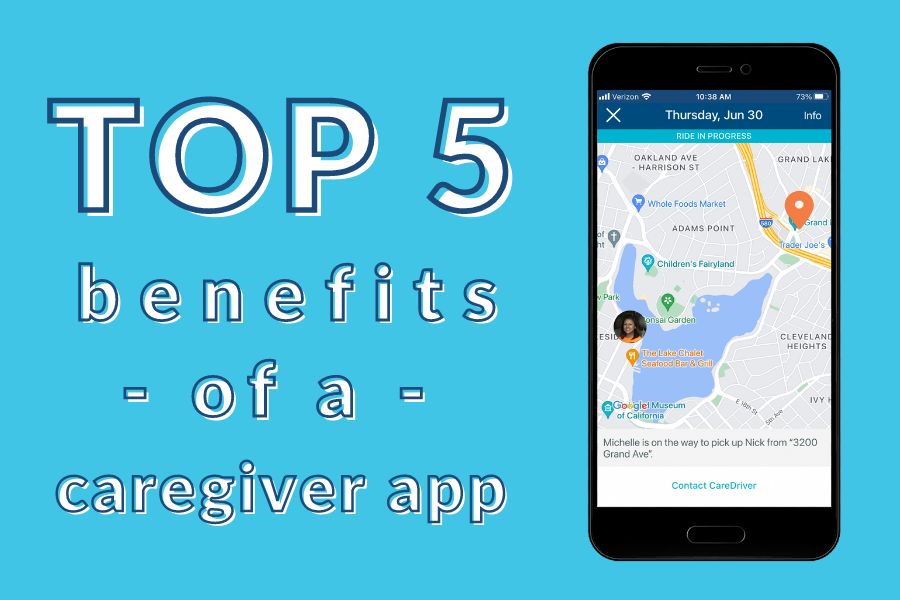Best practices: Special education transportation during COVID-19
Written by Aylin Cook
Many parents found themselves lost in spring of 2020, when almost all American schools moved to remote, virtual learning. Suddenly, kids were logging onto school for sometimes only three or four hours of instruction a day. Everyone was overwhelmed, from parents to students to teachers. Education—not to mention life!—as we knew it had changed so much, so quickly.
The sudden change in routine was hard on everyone, but perhaps nobody was hit harder than the most vulnerable of our students. Kids in foster care, enrolled in special education classes or with IEPs lost access to many necessary, in-person resources overnight.
Now, COVID-19 cases are on the decline and more and more Americans are fully vaccinated. Many schools are opening their doors for in-person learning for the first time in over a year. While the adjustment to a more traditional school day will be yet another challenge for all of us, students with special needs may need extra support, encouragement and education.
In this article, we’ll outline 7 ways you can help students with special needs navigate all the new normals of school transportation, from practicing social distancing to offering consistency and routine.
1. Speak with parents and IEP team about whether a student grasps social distancing protocols
We cannot assume that all students will understand social distancing, the now-commonplace act of maintaining space between people from other households. Reach out to a student’s family and IEP team to determine whether the student comprehends and practices social distancing.
If the student does not practice social distancing, find out why. Social distancing can feel like a really strange concept to children, but there are ways to talk about it with them to make the practice more digestible. For example, parents can instruct children to practice holding out their arms out, or measure six feet with a tape measure, so children can begin to grasp distance and personal space.
Because social distancing is key to lower-risk transportation, it’s important to help all students who can understand social distancing learn to practice it. However, we also must accept that for some students, abiding by such protocols will not be possible.
2. Share individual student notes
School districts, bus drivers and third-party transportation providers have always been serious about safety and compliance. In 2021, we expect all people working in student transportation to focus on COVID-19 safety protocols. Still, we must understand that there are some students who cannot abide by all CDC guidelines.
If a student with special needs cannot follow certain protocols, ensure that their transportation provider is well aware. If a student cannot wear a mask for health reasons; for example, all transportation providers should be made aware ahead of time. This prevents drivers from asking a student to put on their mask, and allows transportation providers to request a different shift, route or accommodation, if necessary.
At HopSkipDrive, we use Rider notes to ensure our CareDrivers are all on the same page about the pupils they transport.
3. Align parents and the IEP team
For many students with special needs, predictability is key. Going back to school—especially with so many new rules and regulations—might be overwhelming. We can set our most vulnerable students up for success by asking parents, someone from the IEP team or other caregivers to practice new routines with students before in-person school resumes.
For example, if we expect schools to check both masks and temperatures each morning, then caregivers could begin to do the same. If a student isn’t used to wearing a mask while in the car, start practicing—even if it’s to drive in circles.
4. Encourage caregivers to help with face masks
Many children, including those with special needs, have been at home for much of the COVID-19 pandemic. That means their experience wearing masks could be quite limited, or non-existent. For students who can wear face masks, parents or other providers can help make this transition easier by talking to kids about face masks.
This handout from Rutgers Medical School offers plenty of tips and tricks to get kids with special healthcare needs comfortable with both wearing and seeing face masks. Some suggestions include:
- Sharing simple books, videos or pictures about why face masks keep us safe
- Choosing comfortable face masks with preferred colors, patterns and fabrics
- Allowing children to place masks on dolls or stuffed animals, or see masks on other family members
- Offering praise when kids wear face masks
The CDC also published guidance for wearing and choosing masks. This piece clarifies who should and should not wear masks.
5. Build a consistent routine
All children thrive on routines, but they’re especially important to students with special needs. Ensure the entire process—from waiting for the ride to getting to school—is the same every day so that expectations are set and students don’t feel like even more things are changing.
The HopSkipDrive experience is always consistent across multiple touchpoints, so that Riders can feel comfortable no matter who’s driving. Still, most of our Riders get to know a small group of trusted CareDrivers. In fact, a Rider typically has just one to three CareDrivers over 90 days.
Want to know more about how HopSkipDrive provides consistent transportation to those who need it the most? This article explains how we make our Rider’s experience so predictable.
6. Forge empathetic relationships
Building relationships with all students—especially those with special needs—has always been important. But it matters now more than ever. A lot has changed and school closures have kept students away from critical in-person services. Students have lost out on learning, on new experiences, on key interactions and education plans.
The ride to school is the true start of the school day for these kids, so we should all work on beginning it with empathy, connection and patience with riders. At HopSkipDrive, our CareDrivers are really experienced “caregivers on wheels.” They have at least five years experience in caregiving, and must meet multiple criteria to begin driving. HopSkipDrive also offers drivers resources on connecting and understanding students with special needs or disabilities.
The goal is clear for all transportation providers, not just those who drive for HopSkipDrive: to give students a safe, comfortable and supportive ride to school, so they can focus on learning.
7. Talk to a child’s IEP team before making changes
Finally, school districts or other administrators should not make changes to a child’s transportation plan without first consulting with the child’s IEP team. Routine, consistency and predictability are key—especially for students with special needs who are headed back to a classroom that looks and feels so different.
To learn more about communicating with and connecting to students with special needs, check out our ebook on the subject.



